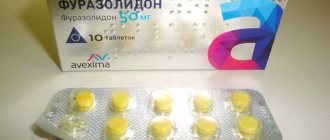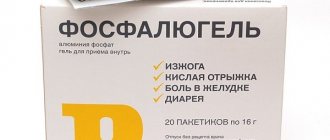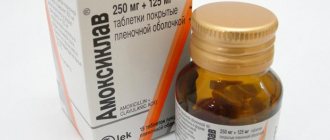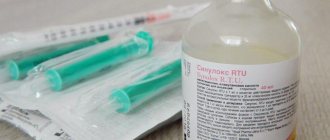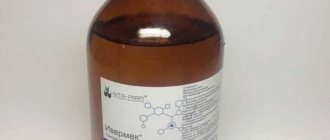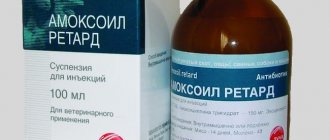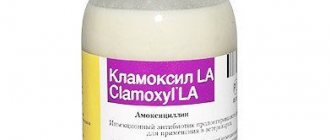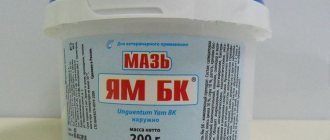- VetConsultPlus
- Informational portal
- Veterinary drug
The size of the pill/medicine is NOT an indication of the correct dose. Never administer medications without the assistance of your veterinarian. Serious side effects or death may occur if you give your pet medications without consulting your veterinarian.
- Brand name: tsiprovet, tsiprinol, tsifran
- Available in tablets of 15, 50, 100, 250, 500, 750 and 1000 mg
Spectrum of action in veterinary medicine
It is very difficult to choose the right antibiotic and calculate the correct required dose yourself without consulting a veterinarian. Bacteria can adapt to conditions that are worse for them and get used to drugs. If the type of drug is chosen incorrectly, the bacteria may take on a different form that is resistant to this drug.
In some cases, a sensitivity test is necessary to determine the effectiveness of a medication against a specific type of bacteria. Therefore, if the disease has become severe and cannot be treated without antibiotics, a visit to the veterinarian is most advisable.
Cats are tested to determine their sensitivity to specific antibiotics.
The main advantages include:
- reduction of treatment time for the disease, ease of administration, low effective dosages (some antibiotics are used in short courses with a single injection due to their action);
- rapid improvement in the pet’s condition;
- the presence of broad-spectrum properties (when there is no time or opportunity to determine the sensitivity of a microorganism to a particular narrowly acting antibiotic);
- reducing the risk of complications from the underlying disease;
- high efficiency even with a high concentration of bacteria in the body.
The disadvantages of taking antibiotics are:
- with long-term antibiotic therapy, the body's overall resistance to infections decreases;
- long courses can cause microorganisms to become accustomed to the drug and reduce its effectiveness;
- violation of the dosage leads to serious consequences and complications (in particular, if it is exceeded);
- Sometimes it is additionally necessary to take medications that normalize the microflora of the gastrointestinal tract.
The most popular antibiotics used to treat cats
There are a huge number of diseases in animals, the successful treatment of which requires antibiotic therapy. Antibiotics are required for the treatment of the following diseases:
- cystitis, urethritis;
- ICD;
- pyelonephritis;
- bacterial gastritis;
- infectious diseases of the respiratory tract;
- pneumonia;
- tuberculosis;
- pyometra;
- giardiasis;
- infectious diseases of the eyes, ears;
- bacterial and purulent skin lesions;
- feline herpes.
Antibiotic therapy is mandatory after surgery (including sterilization), administered during catheterization of the bladder and during other interventions to exclude the occurrence of inflammatory processes. Antibiotics are prescribed after the necessary tests and studies have been carried out and a diagnosis has been made.
The dosage is selected taking into account the weight and age of the pet
Antibiotics used for cats are divided into 2 types:
- bactericidal - their action is aimed at destroying bacteria;
- bacteriostatic - they prevent further growth of bacteria, but the course must be followed to the end, otherwise premature discontinuation of the drug may cause bacterial growth to resume again.
What antibiotics can be given to cats for infectious diseases is usually determined by a veterinarian after examining the animal, during which the general condition of the animal and the form of the disease will be assessed.
Most often in this case, Amoxicillin, Clindamycin, or Benzylpenicillin are used, since these substances have a minimal effect on the cat’s internal organs, that is, they do more good than harm, but only if they are used no more than twice.
Amoxicillin is used for infectious diseases
Quite often, cats develop cystitis of an infectious nature. Characteristic symptoms of the disease are frequent urination, apathetic state, and regurgitation of consumed food. In this case, the specialist prescribes an antibiotic exclusively in injections, because the tablets will not be absorbed properly due to vomiting.
One such antibiotic is Azithromycin, which is most often used for middle ear infections, chlamydia, streptococcal and staphylococcal infections.
If your cat has wounds with suppuration, burns, boils or other skin infections, use tetracycline ointment.
Amoxiclav (penicillin group) is used during infections of the digestive system and respiratory tract in cats.
Azithromycin is most often used for middle ear infections, chlamydia, streptococcal and staphylococcal infections
Amoxicillin injection is prescribed to animals for inflammation of the bladder of an infectious nature, inflammatory processes in the lungs, and infectious lesions of the bones.
Gentamicin is the most inexpensive antibacterial agent and is often used for diseases of the bladder, eyes, ear infections, skin diseases, and infectious inflammation of the respiratory tract.
When is it used?
Tablets, injections
The drug effectively combats the following pathological conditions:
It is advisable to use an antibacterial agent for purulent conjunctivitis.
- inflammatory processes and pathogens of bacteria of the genitourinary system;
- respiratory infections;
- purulent conjunctivitis;
- gastrointestinal problems;
- joint diseases;
- infections in soft tissues, on the skin.
When are antibiotics needed?
Indications for the use of antibiotics:
- treatment of pneumonia, cystitis, pyelonephritis, etc.;
- treatment of associated bacterial infection in ARVI;
- elimination of inflammatory processes that occur after surgical interventions;
- treatment of diseases arising under the influence of specific microorganisms - staphylococci, enterococci, pseudomonosis, salmonellosis, tuberculosis, leptospirosis, chlamydia, intestinal infections and many others;
- getting rid of eye and ear infections.
Instructions for use of the drug Stop Itching for cats
Description of Ciprofloxacin
Instructions for use of ciprofloxacin for cats is a broad-spectrum antibiotic. During chemotherapy treatment, the active substance entering the bloodstream begins to work actively within a couple of minutes. It remains in the cat’s body for another day.
The antibiotic is produced in the form of film-coated tablets. The dosage can be 250 milligrams, 500 and 750 mg . The solution for injection is transparent, with a yellow tint. It is contained in glass one hundred ml bottles. Each of them is necessarily closed with a stopper made of rubber and an aluminum cap.
Ciprofloxacin drops for cats (Ciprovet), which contain the main active ingredient antibiotic. They are used in the treatment of inflammations such as :
- Purulent conjunctivitis or infection in the eye;
- To restore the ocular cornea after surgery;
- With blepharitis of the eyes;
- For ulcers and keratitis on the cornea;
- To relieve inflammation after injury or removal of a foreign body
© shutterstock
Cat owners often ask whether they can give their cat Ciprofloxacin. It is possible, Ciprovet is practically a non-hazardous medical drug, so it can be used not only by adult cats, but also by the smallest kittens.
Before putting drops in an animal's eye, you need to first clean it. To do this, soak a piece of cotton wool in a warm chamomile decoction and wipe the area around the eyes. Then, slightly pulling back the cat’s lower eyelid, drop a drop of the drug. You should not immediately release the cat, you need to hold it for a couple of minutes.
For cats and dogs of small breeds, Ciprovet is produced in tablets. The main active ingredient of these tablets is ciprofloxacin hydrochloride. The amount of Ciprofloxacin in tablets for cats is 15 milligrams/tablet. For dogs - 50 mg/table.
The dosage of Ciprofloxacin for cats is 15 mg for every 3 kg of animal weight. They must be given orally, once a day. The course of treatment is from 3 to 5 days.
Previous
Question and answerMeloxicam for cats - instructions for use, dosage
Next
Questions and Answers Sarcoma in cats - symptoms, treatment, causes
This is interesting: Cat breeds that do not shed
Pros and cons of antibiotics
Antibiotic therapy has its pros and cons. All these medications not only promote faster healing, but also cause harm to the caudate. You can minimize the negative consequences by selecting the most effective medication for a specific disease and correctly calculating the dose. In this case, all the advantages of this treatment method will appear:
- several doses of antibiotics will be enough to achieve the effect;
- the pet’s condition will quickly improve;
- the number of side effects is minimized;
- the antimicrobial effect will be effective even with a large number of microorganisms.
A properly selected antibiotic quickly restores the animal
However, when using antibiotic therapy, the disadvantages of this process must also be taken into account. The main negative effect of long-term treatment with this group of drugs is a decrease in the quadruped’s immunity. In addition, the following disadvantages of antibiotic therapy can be listed:
- possible addiction to the medication with a long course;
- an error in dose calculation can lead to extremely serious consequences;
- possible side effects in the form of allergic reactions and gastrointestinal disturbances;
- After treatment, it is necessary to restore the disturbed intestinal microflora.
We suggest you read: How to properly train and accustom a Yorkie to a diaper or litter box
General information about ciprofloxacin
When treating diseases of cats and dogs, veterinarians do not always resort to antibiotics. Chemotherapy drugs of this group are prescribed in the following cases:
- Infectious lesions of the ears and eyes;
- Purulent lesions and skin infection;
- Treatment of diseases of a bacteriological nature (cystitis, piloeniphritis, pneumonia, pyometra and others);
- Diseases caused by various microorganisms - chlamydia and intestinal infections. Tuberculosis and leptospirosis, salmonellosis and pseudomonosis, staphylococcosis, enterococcal infection.
Antifungal drugs
All antibacterial drugs are divided into groups depending on their chemical structure:
- penicillins;
- cephalosporins;
- chloramphenicol group;
- aminoglycosides;
- glycopeptides;
- lincosamides;
- other antibiotics.
Only a veterinarian can prescribe medication and determine the dosage. A large number of bacteria, their mutations and adaptation to antibiotics make it difficult to select a suitable drug. If the drug is prescribed incorrectly, the bacteria change shape, become more active and cause more harm to the body. In such cases, treatment should be adjusted by a doctor.
Stop stress for cats: characteristics and instructions for use
It is traditionally believed that fungal diseases cannot be treated with antibiotics. On the contrary, long-term use of antibiotics causes mycoses. However, there are a number of antibiotics that are prescribed to treat fungal diseases in cats. These include:
- Nystatin, which in commonly used doses acts fungistatically (slowing down the growth of fungi), and in high concentrations - fungicidal (destroying fungi). Nystatin is especially effective against Candida fungi. Nystatin is used for candidiasis of the gastrointestinal tract, mucous membranes, and genitourinary organs. Nystatin is used topically as an ointment.
- Levorin is also used to combat candidiasis in the form of a 5% ointment or aqueous suspension, as well as orally.
- "Griseofulvin" is prescribed for trichophytosis and is given along with food.
Antibiotics are effective against fungal infections in cats
Description of the drug: main components, their properties
The production of 2 dosage forms of the human drug “Ciprofloxacin” has been established: tablets, injection solution. The blister consists of 10 pills in a round shell. The mass of one is 0.2 g, diameter is 8 mm. Each tablet contains 15 mg of ciprofloxacin hydrochloride. Supplements included:
- microcrystalline cellulose;
- potato and corn starch;
- talc;
- magnesium stearate;
- anhydrous colloidal silicon dioxide;
- titanium dioxide, etc.
The antibiotic can be found commercially packaged in bottles.
The drug "Ciprofloxacin" belongs to a group called fluoroquinolones, which have an antibacterial effect. Microorganisms die and protein synthesis is disrupted as a result of blocking the enzyme DNA gyrase, which, in turn, affects the replication of the DNA helix in the nucleus of the bacterial cell. Refers to non-toxic substances. It affects microbes in a state of rest or reproduction. Available for purchase in a cardboard box with instructions for use. The solution is bottled in 100 ml glass bottles, sealed with rubber stoppers and aluminum caps. Externally it is an almost transparent yellowish liquid.
To treat eye pathologies in dogs and cats, the drug “Ciprovet” is used based on the active substance ciprofloxacin.
This is interesting: How to train an outdoor cat to use a litter box?
Which antibiotic to choose?
When choosing a medication, it is advisable to determine the causative agent of the disease and its sensitivity to a specific drug. You immediately have to take into account other factors: the animal’s susceptibility, the characteristics of its metabolism depending on age and the presence of certain pathologies - renal/liver failure or diabetes mellitus.
If the diagnosis is not in doubt, preference is given to narrow drugs. It is advisable to use one drug as monotherapy. Complex use of antimicrobial agents is prescribed if:
- mixed type infection;
- severe infection requires immediate treatment even before diagnosis to expand the spectrum of exposure;
- you need to enhance the effect of one antibiotic with another;
- as a result of a combination of drugs, their toxic effect is reduced by prescribing smaller doses of each medication;
- if monotherapy was ineffective.
Monotherapy with antibiotics is considered more gentle for cats
The duration of antibiotic therapy depends on the virulence of the pathogen, the duration of the disease, and the danger to the pet. In acute forms, the course is shorter. After the symptoms disappear, therapy continues for another 2-3 days. Stop the medicine immediately.
Classification of antibiotics. Release forms
You shouldn’t try to remember all the possible commercial names of drugs that cats can use. It is always enough to ask which antibiotic or active substance is included in the antimicrobial drug.
According to their action, antibiotics are divided into:
- bacteriostatics (inhibit the ability of bacteria to reproduce and develop);
- bactericidal (kill pathogens).
According to the active substance:
- penicillins:
- cephalosporins:
- aminoglycosides:
- fluoroquinolones:
- nitrofurans:
- chloramphenicol:
- lincosamides:
- tetracyclines:
- macrolides:
- sulfonamides:
- glycopeptides:
- polymyxins:
- carbapenems:
According to the spectrum of action:
- wide spectrum;
- highly specific.
By method of administration to the body (how to give an antibiotic to a cat):
- oral (in the mouth);
- injection (in the form of injections);
- local (powders, ointments, gels, etc.).
By origin:
- natural (true) - chemical substances produced by some microorganisms to combat others;
- synthetic – artificially created antimicrobial agents.
The principle of action does not depend on the form of release of the medicine, the only question is the convenience of administration - for some it is convenient to inject, for others it is convenient to give the cat an antibiotic in tablets.
How to properly treat colds in cats
Like people, cats can catch a cold, and typical symptoms will arise: the cat refuses food, is depressed, and breathing becomes harsh.
There is no specific medicine to treat colds in cats. Many owners are interested in what antibiotics can be given to cats for colds? However, we should not forget that antibiotics are effective only for bacterial infections, but they are useless for viral diseases. For colds, Interferon is usually used, as well as immunoglobulins, but they are prescribed only in the first days of the disease.
Only in case of complications due to a viral disease can a veterinarian prescribe an antibiotic that is suitable individually for each pet. But if this does not happen, the cat is provided with a sufficient amount of drink per day, possibly from a syringe, good humidity in the room, and, if necessary, vitamins by injection. Usually after this the animal gets better.
Interferon is usually used for colds.
Analogues of the antibiotic "Ciprofloxacin"
"Tsiprovet" or "Tsiprolet"
Eye drops for cats are intended to combat ophthalmic diseases caused by infection. You can apply it to kittens and dogs, but not younger than a week old. Eye drops have virtually no contraindications. If the instructions are strictly followed, the kitten will not experience any side effects. The precedent happens extremely rarely, then a mild painful condition manifests itself, possibly burning and itching. Tsiprolet drops for cats are not given to pets suffering from cerebral atherosclerosis in case of cerebrovascular accident.
"Tsipromed"
These are ear and eye drops containing ciprofloxacin. "Tsipromed" has a bactericidal and antibacterial effect. It has good healing properties for various diseases of the ears and eyes. Drops are used if it is necessary to treat both acute and chronic ear infections, namely external and otitis media, eye disease - conjunctivitis.
Amikacin
The strongest aminoglycoside drug for fighting complex infections - E. coli, pseudomonas, etc. Amikacin is often prescribed after using gentamicin, especially if it is suspected that the body will not respond to the first type of antibiotic.
Amikacin is recognized as a drug with toxic effects. This medicine accumulates and settles in the kidney cells, as a result of which its use for pets with diseased kidneys is limited.
The danger of using Amikacin is possible hearing loss and blockade of neuromuscular conduction.
In accordance with the instructions, take it at a dose of 5–10 mcg/kg every eight hours. If a diagnosis of renal failure is made, the dosage is reduced and the animal undergoes a course of treatment under strict supervision.
Strictly prohibited combinations of antibiotics
Not all antibiotics can be used at the same time. There are combinations that are strictly prohibited and can have serious consequences for your pet’s health!
Do not mix:
- Aminoglycosides and cephalosporins (the nephrotoxic effect increases, acute renal failure or nephritis develops).
- Nitrofurans and fluoroquinolones (full antagonists that cancel each other’s effects).
- Fluoroquinolones and cephalosporins (severe kidney damage (nephrotoxic effect), leukopenia).
- Sulfonamides and chloramphenicol (pharmacologically incompatible).
- Aminoglycosides, vancomycin, polymyxin with furosemide (a sharp increase in the toxic effect on the hearing organs until it is completely lost).
- Beta-lactam antibiotics and carbapenem (obvious antagonists).
- Cephalosporins (especially ceftriaxone) with calcium gluconate (especially in one syringe).
- Aminoglycosides (in particular gentamicin) and penicillin antibiotics cannot be mixed in the same syringe (antagonists, increasing the ototoxic properties of gentamicin). At the same time, combination therapy with different injections is welcome.
- Ceftriaxone and vikasol (complete neutralization of the effect of vikasol).
- Polymyxin, penicillin and cephalosporins (pharmacological incompatibility with each other).
Side effects
Like any medicine, antibiotics can have side effects. First of all, these are the phenomena of dysbacteriosis. Together with harmful microorganisms, the antimicrobial drug destroys part of the natural microflora, and this leads to disturbances in the gastrointestinal tract: in particular, a cat may have diarrhea after taking an antibiotic.
Medicines always contain additional substances: emulsifiers, stabilizers, preservatives, formulators. Some of them can cause allergic reactions in cats (itching, skin rashes).
Other side effects of antimicrobial agents for cats depend on the type of drug, its dosage and duration of use. The consequences of taking antibiotics can be:
- swelling caused by the immune system's reaction to a foreign substance;
- vomiting, which is usually associated with individual intolerance to the drug;
- labored breathing;
- muscle spasms (cramps).
Metabolites of many antimicrobial agents are excreted through the kidneys, and if the animal has a disease of the urinary system, it can worsen. If you have liver or kidney diseases, you should not take the aminoglycoside monomycin; for some skin diseases, the bacteriostatic drugs chloramphenicol and syntomycin are contraindicated. All of these factors must be taken into account when prescribing an antimicrobial agent to a cat.
Important! Antibiotics have a negative effect on reproductive function. Therefore, it is not recommended to mate cats within three months after a course of antibiotic therapy, otherwise you may get inferior offspring.
In some cases, it is impossible to do without antibiotics, but despite the fact that they effectively cope with infections, these substances have a detrimental effect on the cat’s body.
Regardless of what antibiotics are given to cats and in what form, we can definitely say that the beneficial microorganisms in the intestines will initially be destroyed. Consequently, the veterinarian will prescribe the necessary medications to restore normal functioning of the intestinal flora.
Cats may experience complications such as itching.
After exposure to antibiotics begins, harmful substances are removed from the body with the help of the kidneys and liver, and this can provoke an exacerbation of existing chronic diseases. Therefore, before treatment, you should definitely examine your pet, and based on the results, the specialist will be able to correctly determine the required dosage, which will help reduce the load on the organs. If necessary, use agents that cleanse the kidneys of harmful substances (hepatoprotectors) after completing a course of antibiotics.
In both humans and cats, complications in the form of allergic reactions often occur, so at the slightest sign you should take the animal to a veterinary clinic for examination and replacement of the drug or its complete withdrawal. Symptoms include swelling, itching, hair loss and skin rashes.
The most severe manifestation of allergies is anaphylactic shock. Antibiotics can also cause allergies to any food, detergents, etc.
Antibiotics can cause allergies to any food
If a cat is intolerant to a certain antibiotic, diarrhea or vomiting may occur, in which case the drug is replaced or the prescribed dosage is reduced.
What antibiotics and in what doses can be given to cats was last modified: September 6th, 2021 by Ekaterina Efimova
Tsiprovet is a low-toxic drug for animals, so side effects are observed in rare cases, if, of course, you adhere to the dosage.
We invite you to read: What are insecticides and how do they fight plant pests?
In cats in case of individual intolerance. hypersensitivity to the active components of the drug on the first day after administration is noted:
- increased salivation:
- decreased physical activity:
- increased thirst:
- vomiting, nausea;
- the appearance of edema;
- cramps, muscle spasms;
- allergic manifestations, minor skin rash.
The antibacterial drug is not used to treat pregnant, lactating cats, small kittens up to seven months of age or until growth and physiological development have completely stopped. The medicine is contraindicated in elderly cats, severely emaciated, weakened individuals, animals with chronic renal and liver failure. Ciprovet is also not prescribed for cats for endocrine pathologies or central nervous system disorders (convulsions, muscle spasms).
Tsiprovet is not compatible with certain groups of drugs, in particular with bacteriostatic antibiotics - chloramphenicol, macrolides, tetracycline drugs. If the veterinary drug is used in combination with non-steroidal anti-inflammatory drugs, drugs that contain calcium, magnesium, and aluminum cations, its effectiveness will be reduced. Therefore, we categorically do not recommend self-medicating your pet without first consulting with your veterinarian.
If characteristic side symptoms appear in cats, the drug is stopped and desensitizing therapy is carried out.
Both people and animals can develop negative reactions to any medication. The body may react to the first entry of the active substance into the body, or negative phenomena may develop during a long course of treatment. The most common ways a cat may respond to antibiotic therapy are:
- diarrhea;
- allergic reaction - itching of the skin, rashes, hives.
An allergy to antibiotics in cats can cause severe itching.
In particularly difficult cases, the animal may develop swelling, seizures, and liver damage. After a long course of antibiotics, a cat may develop a fungal disease.
After a long course of antibiotics, an animal, like a person, can develop dysbiosis. To avoid unpleasant phenomena, it is recommended to take probiotics during and after antibiotic therapy. They should be given 2 hours after the tablets or after the injection once a day, preferably in the evening. The course should continue for two weeks after the last dose of the medicine.
Nutritional drink for cats
For dermatological reactions, which usually indicate the development of an allergy, it is recommended that the cat be given an antihistamine and discontinue treatment with this drug. In cats, the development of allergies may be indicated by pharyngitis in the absence of inflammation of the tonsils.
The reaction may manifest itself as enlarged lymph nodes. In case of allergic reactions, taking Diphenhydramine, Suprastin, Tavegil is indicated, and in especially severe cases, corticosteroids (Hydrocortisone, Prednisolone). If after treatment the cat develops candidiasis (usually in the mouth), antifungal agents are prescribed.
It is very difficult for a cat owner to calculate the correct dose of antibiotic on his own. If the drug group is selected incorrectly, the cat may become accustomed to this group. In case of overdose, when the medication is used for a long time at the maximum dose or with a single overestimation of the dose, as well as when the pet develops individual intolerance, a toxic reaction may develop.
Table. Complications that arise when doses of different groups of antibiotics are exceeded
| Antibiotic groups | Complications |
| Penicillins | Neuro-, nephrotoxic reaction |
| Cephalosporins | Neuro-, nephrotoxic reaction |
| Tetracyclines | Gastrointestinal complications: loss of appetite, vomiting, diarrhea |
| Macrolides | Gastrointestinal complications: loss of appetite, vomiting, diarrhea |
| Aminoglycosides | neurotoxic effect – decreased blood pressure, respiratory depression, hearing impairment |
| Sulfonamides | Lesions of the hematopoietic system |
An overdose of antibiotics causes severe reactions in the body
How to give antibiotic tablets to a cat?
If the veterinarian prescribed the pet to take medication in tablets, the cat owner will have to learn a new skill for him - how to give the tablet to the cat. Some tailed animals will happily eat the medicine, crushed and added to a small amount of their favorite treat (favorite wet food, for example, a piece of butter, etc.). You can roll the tablet into a bread crumb or a piece of cheese. However, there is always a danger that your pet will chew the lump and spit out the medicine.
At a veterinary pharmacy you can buy a good inexpensive device called a tablet dispenser. The tablet is attached to the end of a syringe-like device and inserted deep into the pet's mouth at the back of the tongue so that he cannot spit it out. After this, you need to cover your pet’s mouth and nose so that he makes a swallowing movement. You can simply master the skill and throw the tablet also deep into the root of the tongue.
How to administer an antibiotic intramuscularly?
You need to inject medications using a new syringe each time. The cat needs to be secured with the elbow of your free hand so that it does not jerk when the medicine is administered - some antibiotics are very painful. There is no need to lubricate the injection site with alcohol.
The drug in the syringe must be warmed by hand to at least room temperature. There is no need to inject the solution directly from the refrigerator. The selection of needles is carried out in accordance with the volume and viscosity of the medication. If the medicine is administered no more than one cube and the solution is of aqueous consistency, you can take an insulin syringe. If the antibiotic is of the oily type, you will need a regular syringe with a medium needle.
The injection is placed in the thigh so that there is at least 1 cm of needle inside. If a small amount of medication is administered, it must be administered quickly. If the solution is large, it should be administered slowly. After the injection, you should not hold the animal and calm it down. The cat will immediately run away and cope with the stress itself. If after the injection the cat begins to tuck its paw or limp a little, it’s okay; this reaction will go away within one to two days.
Instructions for use
The dosage of the tablet form of the drug should be selected for the fluffy dog strictly according to its weight.
An antibacterial drug, the active substance of which is ciprofloxacin, is taken as prescribed by a veterinarian. The doctor determines the dose and duration of use according to the established diagnosis, depending on the form of the disease (mild, severe), and the body weight of the sick animal (a kitten for every 3 kg of weight - 1 tablet). The tableted medicine is taken orally by the pet with food or placed on the tongue closer to the throat forcibly. Injections are given to the animal directly into the muscle. The injection is given at one point with a volume of no more than 2.5 ml to avoid a painful reaction.
